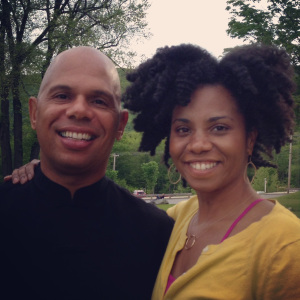People who fall in love with yoga tend to get obsessed with it. They observe dynamic changes in their bodies and it excites them. They experience more freedom in the way they feel overall, and the euphoria around this achievement can’t be beat. These are also the students who will sign up for unlimited class packages at studios and take class 3-5 times per week. Their lives get shifted to and fro to accommodate their yoga schedule, which is arguably exactly the point of yoga practice. Their friends and family first notice the more obvious physical changes, remarking with comments like, “Crystal, you’re like the incredible shrinking woman! What are you doing?!” The response of course is yoga, and they take every opportunity to profess the details of their new found passion, and invite that observant friend to an upcoming class. This was certainly my story seventeen years ago. I have an ex-boyfriend who would joke about my faith in yoga’s ability to heal or fix just about anything that ails you: “Flat tire? Try yoga! Back taxes? Try yoga! Hungry? Try yoga!” I would laugh uproariously at this joke because it is oddly quite truthful.
As a teacher now, however, I notice that such students are not so much changing their lives around for yoga, as they are for a good workout. This is not a big deal to me. I’ve always felt that if it gets you on a yoga mat, it’s probably mostly a good thing. But when yoga is presumed merely akin to an exercise class, the next logical inquiry for students caught up in the exhilaration of it is, where can I get trained to teach it? I am frequently asked by students, “Where did you do your training?” They begin fantasizing about quitting their disappointing day job to teach yoga, as if this profession is one anybody who simply loves yoga can and should do. It’s fascinating to me, really; that the teaching of this ancient practice intended to unify body, mind and spirit and be a practice for a lifetime has become a thing to covet, and in America, commodified as a 1-month certification to acquire. I wish I could fast-forward some of those wannabe teachers to the very un-exciting task of procuring yoga-teaching work that lay ahead. I wish I could prepare them for the acting-like auditions they will have to go on. I wish I could help them find a yoga talent agent that might help them navigate the career challenges they are too naive to appreciate will soon come their way.
Though my love affair with yoga pose practice began similarly to many students’, my prior experience as a school teacher in Oakland, CA made me very leery about teaching yoga. I loved it so much, and I fiercely protected it from becoming something I might resent.
Teaching takes EVERYTHING. (The only other thing that takes more might be being a good parent.) Good teachers get consumed by the content they teach. And too much of anything can be a bad thing, or certainly lead to burn out. Turns out it was after practicing for ten years that one of my teachers at the time, Rolf Gates (my first African American teacher, btw), finally convinced me that I should seriously consider learning to teach yoga. Thinking back on this, he was my first official yoga mentor, and I owe so much to him. He saw something in me. And most importantly, he really saw me. He suggested many trainings, though surprisingly, none of them led by him, master teacher that he is. He told me which ones would prepare me best to actually teach well, and which ones would just teach me how to choreograph, as it were, and call out poses in some dance-like creative sequence set to music. Again, I am so grateful for Rolf’s generosity and wisdom, and moreover his willingness to share his vision of me being a great teacher one day. Clearly, I heeded his advice. In the beginning, yoga was something I taught on the side for fun, as a personal challenge, and a way to deepen my own understanding of yoga.
Fast-forward seven years. I now teach 19 classes per week, thankfully down from 30 just a couple years ago. Whew! What used to be a fun and practical past time is a real enterprise and extreme challenge. And not just because I make my living doing it, but because I am more depleted and “out of shape” and balance from yoga than I am jubilant about it. Oh, the irony! I’m not complaining or anything because I do love what I do. But dang, it is rarely a sunny picnic in Central Park! My home practice is mostly maintenance; restoratives that replenish and hot baths with Epsom salts that rejuvenate tired muscles. And frankly, I do a lot less asana and a lot more dharana or meditation. It’s become a necessity for self-preservation.
I’ll confess it, I’ve had a couple moments when I snapped in my kids classes, and that was not cool. Yogis practice a yama, or ethical standard of conduct, called ahimsa, which translates from Sanskrit to nonviolence. I teach it as kindness to my youth classes. I learned from personal experience, and experiences as both a student and a teacher that violence can take physical and verbal forms, and be equally harmful. Observing my self at my wits end, too overwhelmed by physical and mental fatigue to remain mindful of my speech or behavior, is what ultimately turned me into a “real yogi”, for lack of a better way to put it… over a dozen years after my first yoga class, and at least three years into my teaching practice. Could this tale be more rife with irony? Probably not. I’ve learned, and perhaps the hard way at times, that it’s easy to be a yogi when life is bumbling along serenely. On the other hand, when I observe myself practicing and embodying yogic principles even while under duress, THE hardest thing ever, I give my yoga self a little pat on the back. Just like life, yoga and yoga teaching is a hustle. I’m learning to get comfortable with what is usually a tumultuous ride. And the practice, if you sincerely commit to it, is no joke.

